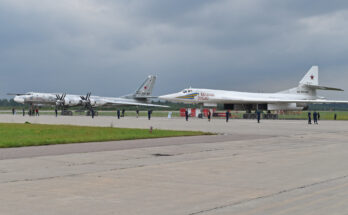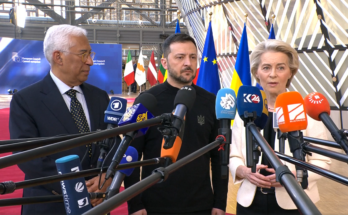In what may reasonably be described as a surprise, British Prime Minister Boris Johnson has announced a major investment package for the Ministry of Defence – marking the largest such spending boost since the end of the Cold War. The four-year funding deal amounts to an extra £16.5 billion ($21.9 billion) for the armed forces – a sharp break from the expected financial squeeze facing the MoD as the U.K. struggles with the economic and fiscal fallout stemming from the COVID-19 pandemic.
When Chancellor of the Exchequer Rishi Sunak cancelled the expected comprehensive spending review in October in favor of a one-year funding deal that would allow him to analyze the impact of COVID-19 on the national economy, it appeared the MoD was in for a severe financial reckoning.
There was also the looming prospect of the forthcoming integrated security, defense, and foreign policy review, promised to be the most “radical reassessment” of Britain’s place in the world since the end of the Cold War. This document is to set out future priorities after examining everything related to national security, ranging from the armed forces to the intelligence services, counterterrorism, organized crime, diplomacy, and development.
Speculation regarding the review swung to extremes, with threats to troop numbers, core procurement priorities, and legacy military platforms all under the microscope.
However, the back-and-forth regarding the national budget – and ministry budgets in particular – resulted in a delay of the review from late November into 2021 (likely the first quarter).
Some of the speculated capability cuts may still be forthcoming.
Ultimately, however, British Defence Secretary Ben Wallace scored a big win in the never-ending struggle between the MoD and Treasury.
Wallace cited the need to end the cycle of boom and bust, while Prime Minister Johnson stated that the spending boost will “end the era of retreat” and enable groundbreaking new technologies for the military.
Johnson pointed out in his statement that the additional £16.5 billion represents funding over and above the amount pledged in the Conservative Party manifesto commitment (0.5 percent above inflation for each fiscal year in government), thus amounting to an overall cash increase of £24.1 billion over four years, compared to the £41.3 billion ($54.8 billion) currently earmarked for the defense budget.
https://www.youtube.com/watch?v=GI0WJ–ap6o
While the latest news is unmistakably good for the British military, the topline investment total masks some of the harsher arithmetic facing the Ministry of Defence.
Under its updated Defence Equipment Plan, a rolling ten-year plan that outlines major equipment programs and funding plans, the Ministry faces a deficit of as high as £13 billion ($17.26 billion) between expected funding available for purchasing and maintaining equipment and the total cost of said equipment projects over the ten-year period.
The mismatch between “wants” and “absolute needs” regarding planned and legacy equipment, plus those aforementioned cutting-edge technologies, means difficult decisions still confront British defense. How much of the new funding will go towards plugging the defense equipment spending gap versus new support agencies and future technologies remains to be seen.
Future projects deemed essential to both the British military and the defense industrial sector, such as the next-generation Tempest air combat system, will require considerable funding.
Meanwhile, the list of needs confronting the armed forces – ranging from personnel requirements at the point of recruitment to funding next-generation technologies – is long. This, of course, is to be expected of a nation supporting a full-spectrum military, let alone one determined to remain a crucial ally to the United States.
Plus, the U.K. also needs to support crucial ancillary elements for national defense, including a new agency dedicated to the military use of artificial intelligence (AI), a new National Cyber Force (to be run jointly by the MoD and the Government Communications Headquarters, or GCHQ), and an impending Space Command (mirroring steps taken by the U.S., France, and Japan).
Then there are questions about lagging recruitment, the need to improve barracks, and a requirement for more specialists, such as engineers.
This does not even begin to touch upon the range of various ongoing equipment programs, much less the list of procurement cock-ups (particularly in the domain of armored vehicles) costing British taxpayers untold billions in pounds for very little return on investment.
But along with the additional funding, Johnson has also delivered good news on the equipment front, particularly concerning the Royal Navy.
A competition for the Royal Fleet Auxiliary’s solid support ship requirement will be revisited in the spring of 2021, while a new frigate – the Type 32 all-purpose warship – is to be acquired as Johnson has pledged to make the Royal Navy the “pre-eminent naval power in Europe.” In a boost to Britain’s naval shipbuilding sector, these will all be built in-country, thereby supporting jobs across the Union.
Perhaps most importantly, the second of two Queen Elizabeth class aircraft carriers – the HMS Prince of Wales – will not be mothballed or sold off to another country as previously speculated. This means that both carriers will survive any rumored cuts and – more importantly – the requisite support ships (both combat and materiel) for a Carrier Task Force will be realized.
In a bid to increase strategic cooperation with allies and reorient the national defense and foreign security outlook around the Navy, proposals are being considered for the permanent forward-deployment of one of the carriers (possibly the Middle East or Southeast Asia) while inviting partners (Australia, Canada, the U.S.) to deploy service personnel and assets aboard the carriers for joint operations.
What will happen to the British Army’s personnel numbers, fleet of Challenger 2 main battle tanks, bogged-down Warrior infantry fighting vehicle capability sustainment program, flagging armored vehicle procurements, and other requirements bears watching. Ditto the Royal Air Force’s long-term requirement for 138 F-35 Lightning II combat aircraft (48 units have been ordered to date).
Decisions loom as to how many, and which, legacy platforms will survive as robots, autonomous systems, and cyber and space capabilities take prominence and absorb chunks of the promised funding.
But for now, this can be viewed as a good day for the British military – perhaps even a very good day.
Dan Darling is Forecast International’s director of military and defense markets. In this role, Dan oversees a team of analysts tasked with covering everything from budgeting to weapons systems to defense electronics and military aerospace. Additionally, for over 17 years Dan has, at various times, authored the International Military Markets reports for Europe, Eurasia, the Middle East and the Asia-Pacific region.
Dan's work has been cited in Defense News, Real Clear Defense, Asian Military Review, Al Jazeera, and Financial Express, among others, and he has also contributed commentary to The Diplomat, The National Interest and World Politics Review. He has been quoted in Arabian Business, the Financial Times, Flight International, The New York Times, Bloomberg and National Defense Magazine.
In addition, Dan has made guest appearances on the online radio show Midrats and on The Media Line, as well as The Red Line Podcast, plus media appearances on France 24 and World Is One News (WION).




